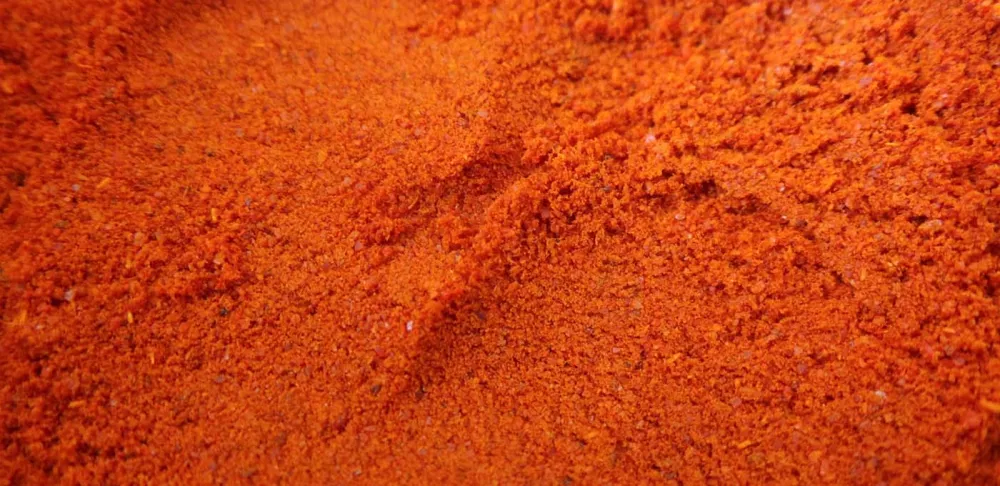If your familiarity with paprika is limited to its use as a garnish for deviled eggs, then it’s time you got to know this versatile spice and its many varieties.
Paprika is made from a particular variety of pepper — Capiscum annuum — which is dried and ground, imparting a deep, earthy flavor and its signature crimson hue. Unlike cayenne, which is another powdered chili spice that is cultivated for a consistent heat level that performs in small doses, paprika peppers are like wine grapes in that variations in where they are grown and how they are processed result in different outcomes with different uses.
If you’ve ever experienced buyer’s anxiety at a spice market when you were simply looking for “paprika” but found all manner of choices in the category, then you may be wondering what is the difference between those that are labeled as sweet, hot, smoked and even Hungarian paprika.
The pepper used in paprika cultivation is indigenous to Central Mexico, though it is typically a background flavoring agent in its homeland, where it plays second fiddle to more common spices and herbs such as cumin, coriander, and oregano. Through spice trade in the 16th century, paprika made its way to Europe, where it was given a starring role in dishes from Spain, Portugal and Hungary, flavoring many sausages, seafood, meat and egg dishes, and notably putting the paprika in “paprikash.”
Here we’ll explore the difference between the varieties of paprika while highlighting a couple of recipes that put certain types to use.
Sweet Paprika
If that bottle on your spice rack is simply labeled as “paprika,” in all likelihood it is sweet paprika, the most common variety available.
Most Capiscum annuum plants produce sweeter peppers, moreso when grown in cooler climates. The heat of various chili peppers is concentrated in their seeds, and sweet paprika is typically ground only from the flesh of the pepper without including its seeds. The “sweetness” of sweet paprika is subtle, however, and should not be treated as something that adds perceptible sweetness to a dish. The naturally earthy tones of paprika are supported by a round richness of flavor in sweet paprika, rather than sharpness, smoke or heat.
Related Recipe: Fig and Ricotta Toasts with Sweet Paprika Dressing
Hungarian Paprika
Hungary’s national dish — chicken paprikash — is built around paprika, so the cultivation of peppers for use in Hungarian paprika is a serious business. Technically, there are about seven different varieties of paprika made in Hungary, with such labels as Noble Sweet and Pungent Exquisite Delicate, so if you’re spice shopping in Hungary proper, you might want to find a Hungarian resident to guide you.
Hungarian paprika available in the United States, however, is a rich, sweet variety owing to Hungary’s continental climate. In a typical chicken paprikash preparation, paprika typically functions as a rub for the chicken skin, which then combines with a tomato, mushroom and sour-cream based sauce for a rich, earthy and bright flavor.
Hot Paprika
Like jalapeños, the peppers that are used to produce paprika can produce a wide range of Scoville units. Hot paprika is made from peppers that are specifically cultivated for heat, and additionally, unlike the processing of sweet paprika, the seeds and other plant materials are also ground into the resulting powder to kick up the heat factor.
Culinarily speaking, hot paprika functions a little more like cayenne. In cheaper spice brands, hot paprika may even be cut with some cayenne, though the resulting powder still has a richer flavor than cayenne alone. Hot paprika is a terrific component in a fiery spice rub for spice-forward barbecue dishes, or a Nashville-style hot chicken.
Smoked Paprika
Smoked paprika is to paprika as chipotle is to jalapeño.
Paprika naturally brings a little smoky character to the table with its distinctive, complex flavor. In smoked paprika, however, this is intentionally amplified by actually smoking the peppers during the drying process.
Smoked paprika can be made with either sweet or hot varieties — multiplying the available paprika choices — and resulting in a chili powder that can lend almost a bold, bacon-like flavor to various dishes.
For this reason, smoked paprika is a great component to use in place of smoked meats or bacon in vegetarian versions of dishes such as baked beans or stewed greens. It can also tease out smoked barbecue flavor when an actual smoker isn’t available.
Related Recipe:Perfect Ribs






